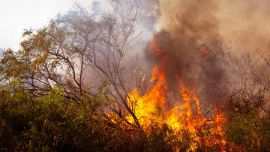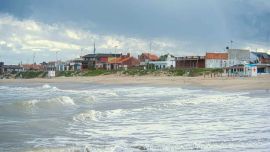It’s my turn to wish all readers a Happy New Year, rather more belatedly than most (with 2019 already around five percent over), and it is indeed a new year for this space, my column, too.
Apart from the 2018 annual round-up in the last edition of the year, this byline has not appeared since last November when the New England economist Dr Hale abruptly terminated my (unpaid) economic consultant services after 64 successive midweek briefings, vanishing totally from my life ever since and with nobody stepping forward subsequently to take his place. Not terribly egomassaging but I’m increasingly coming round to the view that the old curmudgeon was actually doing me a favour. And not just because it freed me to spend most of the following month in Britain, looking up the two children and other family over Christmas and the New Year. Back in this country, I now also find myself free to concentrate on what is sure to be the defining feature of this year – the elections already starting in March (in Vaca Muerta territory at least).
A complete road map for my electoral year still awaits final arrangement of the division of labour among my newspaper colleagues but for exactly half a year from today it is already defined. This column is the introduction to a new 25-part series, starting next Saturday, consisting of an electoral guide to each of Argentina’s 23 provinces plus this district (the Federal Capital).
To those alert readers who might point out that 23+1 does not equal 25, I should explain that my simple arithmetic is not at fault – populous Buenos Aires province (with, for example, more people than any European county, department, state, region or any other sub-national division you care to name, with the exception of North Rhine-Westphalia) will be split up into Greater Buenos Aires (a law unto itself) and the rest of that territory.
Not that readers are going to be seeing those two particular parts any time soon because the provinces will appear in ascending order of magnitude according to the size of their electorate. Or that is the general criterion anyway because it will be impossible to be too rigid with at least 10 provinces set to advance their elections, often well before October. It would not make much sense to run an electoral guide to a province after it has voted – thus over the next six months you might well see the odd early bird jumping the queue.
The upcoming series is basically designed as an electoral Bradshaw’s or Baedeker but it will also be a gazetteer with multi-disciplinary ambitions – the only limit placed is that it may not stray beyond the boundaries of the province in focus.
With electorate size as the startingpoint, the core information will be political and electoral – for example, the number of deputies and senators per district (both total and up this year), who they are, the role of the governor, other local notables, the political gossip and a brief electoral history to give some context. Also I’ll focus on the population, including main towns, the fiscal picture (with only five provinces in the red) and a socio-economic profile. But more qualitative aspects giving provinces their identity should not be ignored such as local folklore and colour – in this connection it might even be useful to try and squeeze in some tourist tips for any readers passing through who might be heading in that direction.
This series is grounded on the premise that if Argentina’s Constitution gives each province three senators whatever its population or size, then equally every province deserves a page in this newspaper. Not all pundits think this way, however. For many the vast urban sprawl of Greater Buenos Aires is the only battleground worth watching with any attention to the likes of Catamarca or Chubut a complete waste of time – the current media obsession with how Buenos Aires province Governor María Eugenia Vidal defines her electoral calendar reflects this mentality.
Yet Buenos Aires province does not always clinch the issue. For a start it did not swing the last presidential election in 2015, no matter how much Vidal’s upset win might feed that impression – the outgoing Peronist provincial governor Daniel Scioli edged Mauricio Macri in his own district (by 4.8 to 4.6 million votes) and Macri basically owes his presidency to Córdoba where his landslide lead of almost a million (some 930,000 votes, to be more exact) far exceeded his nationwide margin of 679,000.
The simple parliamentary numbers – with the almost half of the population residing in the city or province of Buenos Aires being represented by only six of the 72 senators and 95 of the 257 deputies (or less than three out of every eight) – invite caution. Last year’s abortion vote could be cited as a case in point. Some opinion polls showed around 60 percent of the public in favour of the reform but too much of that 60 percent was apparently located in that half of the country with only six senators so that the initiative was doomed to defeat in the Upper House.
Argentina has come a long way since its first presidential election of 1854 when only one percent of a population of 640,000 was enfranchised – federalist Justo José de Urquiza received around 5,700 of these 6,400 votes nationwide although (as in the United States) the election was officially defined in the Electoral College, where Urquiza was endorsed by 91 of the 106 electors. This election embraced 13 provinces (excluding Buenos Aires, which had recently pulled out of the Confederation, drawing up its own constitution), of which two (Santiago del Estero and Tucumán) boycotted the vote. By way of contrast, around 33 million out of a total population of 44.2 million in the 23 provinces and the Federal Capital were eligible to vote in the 2017 midterms.
Of these 33 million or more voters, just 132,000 are to be found in Tierra del Fuego, Argentina’s newest province, but, true to the criterion of ascending order of magnitude, the bottom of the world will be passing to the top of the heap next Saturday.
In the next six months this series might in some way mirror
the quantitative advance of Argentine electoral history since
1854. Almost half a century ago there was a Werner Herzog
film Auch Zwerge haben klein angefangen – even dwarfs
started small.related news





















Comments